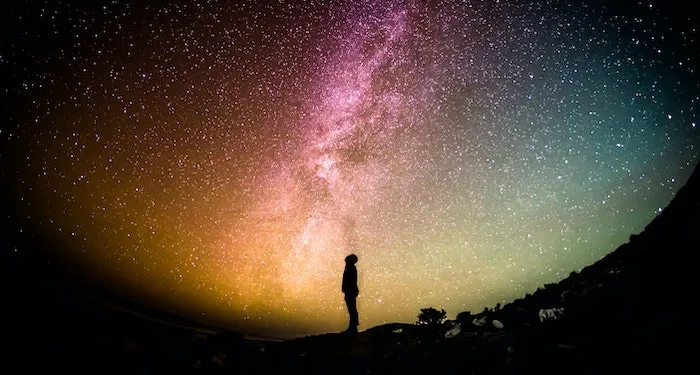
The Cold Equation of Science Fiction
Science Fiction has never cared for your comfort zone. Science Fiction has always been about testing your boundaries and exploring the possibilities of science. There is a fine line between science fiction and fantasy, and that line is as thin as a sheet of graphene. At least fantasy has the option of a happy ending. For years, some of us thought science fiction did not. Nothing made this clearer to me than the classic short story The Cold Equations by Tom Godwin. However, the recent movie adaptation Stowaway has me questioning if it really is necessary for science fiction to push us out of our comfort zone. Can we really have a happy ending in our sci-fi literature?
“The Cold Equations” by Tom Godwin
During my high school education, my English teacher assigned us “The Cold Equations” by Tom Godwin. Set in space in the distant future, the short story features two characters: the pilot (Barton) and an 18-year-old female stowaway (Marilyn). During his flight to a frontier planet Barton discovers Marilyn, who stowed away in the hope of getting to her brother Gerry. By law, Barton must jettison all stowaways into space because his vessel carries the exact amount of fuel required to safely land at his destination. His cargo includes medical supplies, marking the urgency of his mission. Marilyn’s extra weight now exceeds the limit for the fuel provided. Spoiler alert: (though it was published almost 70 years ago): Marilyn eventually chooses to walk into the airlock and is ejected into space.
As a 13-year-old girl, let me just say this story messed me up for two weeks after reading it.
Being neither an engineer nor a scientist of any shape (not then or now), I accepted the scientific rule presented in the storytelling. I was devastated by the consequences of Marilyn’s ill-fated decision. I consoled myself with the hope our society would never reach the level of such concise calculations made in the name of science. Of course, I look back and laugh sardonically at my younger self, but it did give me some comfort while I recovered from the literary shock.
Many years later, I learned young Marilyn’s death was not originally intended by the writer. “The Cold Equations” was originally published in Astounding Science Fiction in August 1954 under the editor John W. Campbell. It was Campbell who claimed credit for Marilyn’s death, reportedly saying he had sent the story back to Godwin three times before he ‘got the version he wanted’. Apparently, Godwin kept suggesting ways to save the girl but Campbell was determined for the story to hold the shock element.
Science is Not Meant to be Comfortable
There are a couple of issues I have with Campbell if, in fact, the above statement is true. I am not the first to raise them. Physicists and engineers are often the first to point out the flaws in the equation themselves (like this analysis by Alex R. Howe here). Social commenters have also pointed out the dated sexist values placed on Marilyn’s “girlish naivety” and Barton’s “manly need” to save the day (as Cory Doctorow points out here).
Keep in mind “The Cold Equations” was published before the Space Race had started. There are still certain expectations when it comes to science fiction. The idea of space travel was still in the science fiction realm and the average reader would not understand the complexities of the story. As flawed and questionable as the scientific concepts may have been, the purpose of the story was to question how the development of science would help us explore what it means to be human. The question remains: Did Marilyn really need to die to make the point? I say no. We may think ‘the story writes itself’ but the truth is, the writer (and subsequent editor) will always have the final say on how a story is published. The flawed limitations of this story fall directly at the feet of the editor and writer. At all times, they had the choice to explore the story or to allow their bias to interfere. Perhaps it is with the blessing of hindsight but we can now see there are better ways to push the reader outside the comfort zone without having to rely on the shock of meaningless death.
From “The Cold Equation” to Stowaway
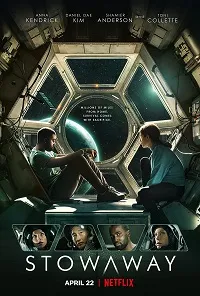
Recently released on Netflix, Stowaway is not an exact replica of The Cold Equations but it is similar enough to see the genetic code. The movie features three astronauts travelling on a mission to Mars: Commander Marina Barnett (portrayed by Toni Collette), and science researchers Zoe Levenson (Anna Kendrick) and David Kim (Danie Dae Kim). Soon after take-off, they discover the unconscious Michael Adams (Shamier Anderson), an injured launch plan engineer and now an unexpected problem for the mission.
Where “The Cold Equations” seems to work overtime to remove all agency from its characters, Stowaway allows the story to explore both science and humanity equally. Unlike Marilyn, Michael’s very presence isn’t the sole issue impacting the crew. It is exacerbated by the damage to the carbon dioxide scrubber (admittedly made by Michael’s unconscious body during take-off). At least there are options: the biologist tries to use algae to recycle some carbon dioxide; the medical researcher suggests tapping the liquid oxygen remaining after launch. Again, the significant difference here is the agency allowed to the characters to explore their options and not simply shrug and say, “Welp. The rules are to eject all stowaways, so…”
Despite the changes to the story, one thing remained consistent between the two: neither cared about your comfort zone. In fact, both stories actively worked to push you out of your comfort zone. The difference, however, was the journey in doing so. “The Cold Equations” moved all responsibility and decision-making to a disembodied ‘rule’. Stowaway was simply filled with unfortunate circumstance (but hey, at least they tried).
Is All Science Fiction So Cold?
No. And this is the thing. Science fiction is about pushing our limits and expanding our ideas of science, innovation, and the future. It is supposed to test our minds and make us think about where we as humans fit into the scheme of things. But does it need to leave us uncomfortable at the end? No. That is not a requirement. That is and always will be the decision of the creator (or, in the case of “The Cold Equations”, the decision of the shock-jock editor).
There are plenty of great science fiction stories to make you think and leave you with a happy feeling. Here is the list I wish I could give to my 13-year-old self:
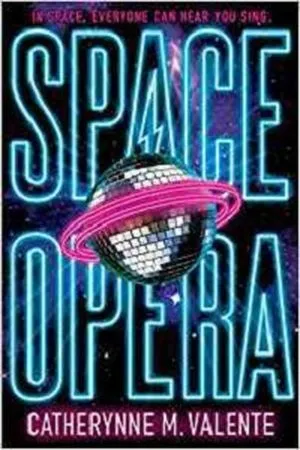
Space Opera by Catherynne M. Valente
If you are already missing your Eurovision fix, this is equivalent but in Space. I swear everything is better when you add ‘but in Space’ at the end. In this case, Planet Earth is hosting this year’s big event where the stakes are high: if we don’t win this gladiatorial-discotheque-beauty pageant, we all die. And our representing band is a one-hit-wonder called Decibel Jones and the Absolute Zeros. Space Opera is not going to be winning any Grand Prix itself, but it is the most ridiculous and pun-filled space ride I have had in a while.
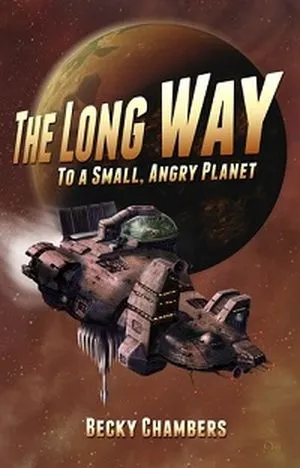
The Long Way to a Small Angry Planet by Becky Chamber
This one is great for a sense of space travel without ever leaving your bed. It is really a ‘family of strangers’ coming together to overcome the challenges. Science fiction is all about how we develop as humans and there are plenty of humans (and aliens) to observe in this book. Overall leaves you with a positive.
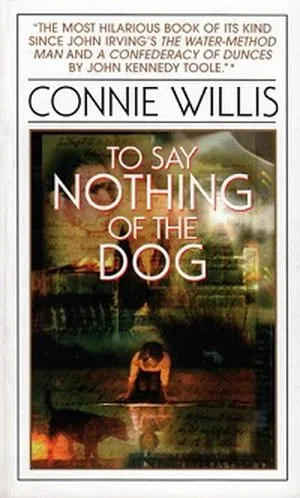
To Say Nothing of the Dog by Connie Willis
An absolute classic in the realm of time travel and human relationships. I’m sure many of us would have loved a time machine to escape the perils of 2020. However, this book tactfully explores the possibilities when your temporal escape for a holiday is not quite as relaxing as you hoped.
Fellow Book Rioter Nicole has more suggestions for feel-good science fiction books here. And I promise: science fiction may push you out of your comfort zone, but it doesn’t have to leave you there. There’s always room (and enough fuel) for a bit of hope.


